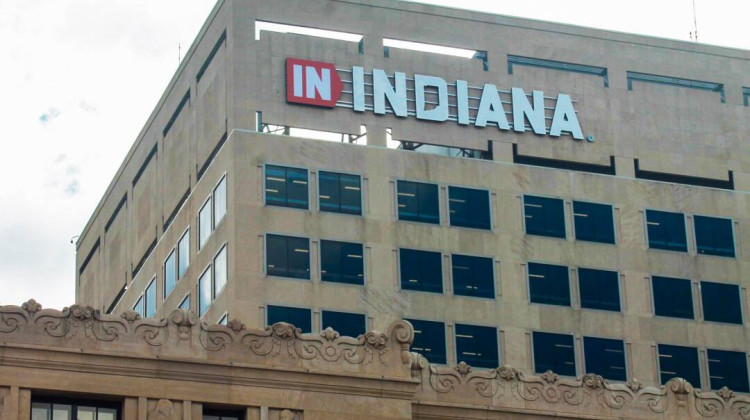Grammer Presbyterian Church opened its doors in 1907. But in November 2021, it held its final service.
The congregation dwindled to three members this fall, making it hard to justify remaining open.
“It was difficult," Amy Artis who as served as the church's part-time pastor since 2015 said. "As a pastor, you feel like you should stick with the church, you know, to help them, to be there for them.”
Artis added while the pandemic hastened its closure, the church had been struggling to keep its doors open for a while.
"Too often churches just get to the point where they find themselves ignoring the change," she said.
She said changes brought on by the pandemic overwhelmed the congregation.
"They just they couldn't, they couldn't get their mind around it. They couldn't see, any light at the end of the tunnel."
The congregation had made efforts to connect with the community and increase its numbers. They got computers for an after-school study program and tried to start a food pantry. But efforts like these take volunteer numbers that smaller churches don’t have.

Artis said as more people move to cities, retaining members and attracting new ones isn't always realistic.
The 2020 US Census shows that while counties in central Indiana saw population increases, some rural counties saw population drops as large as 5 percent over the last decade.
Artis still preaches on Sundays at Scipio Presbyterian Church, about five miles from Grammer. She used to commute between the two on Sundays.
Artis said the Scipio church absorbed a couple of Grammer’s old members. But it has also felt effects of the pandemic.
Scipio Presbyterian had an average Sunday attendance of about 22 in June 2019, and it’s dropped to 16 as the pandemic has gone on. A big part of this drop, she said, is caused by aging members whose health no longer allows them to attend in-person services, especially with the risk of COVID-19.
"Small churches can be more open to things than large churches, but they can also be very steeped in tradition."
Deanna Howard has been a member at Scipio Presbyterian for 35 years. The congregation feels like a family to her.
“I walked in the door here and people started talking to me right away, asked me to sit with them," Howard said. "I thought, I think I’ve found the place where I need to go.
Artis said part of the challenge in getting new members is that people have certain needs in mind when they look for a church now.

The draw of big churches
Arthur Farnsley, a senior research fellow at the Center for the study of Religion on American Culture, isn’t surprised to hear the pandemic has created challenges for small churches.
“People are interested in program for the elderly, for teens, for their children, for schools, recreational programs. When you get to really big congregations, they’ve got jazzercise and Pilates, and there’s a point at which you’re talking about lifestyle."
He said when smaller churches close their doors, it affects the community at large, especially in more rural areas.
“Congregations fill a giant hole in the social safety net," Farnsley said. "They have clothing pantries. Even small congregations have food pantries. They are networks that can be mobilized when somebody needs help.”
He cautioned against sounding the alarm too early, and says things typically happen more slowly in intuitions as old as churches.

Even if the Scipio congregation can't increase its numbers, Artis said they still want to find ways to serve the community. Recently, they’ve given money to different causes– including equipment for a local playground, the animal shelter, and the historical society.
“We want to still use the resources we have to be of value to the kingdom of God.”
The Scipio congregation is meeting this Sunday to talk about its options for the future, and come to a consensus on what the church is, and what's most important to the congregation.
"If you have more than two people together, you're going to have more than two opinions," Artis said.
 DONATE
DONATE







 Support WFYI. We can't do it without you.
Support WFYI. We can't do it without you.